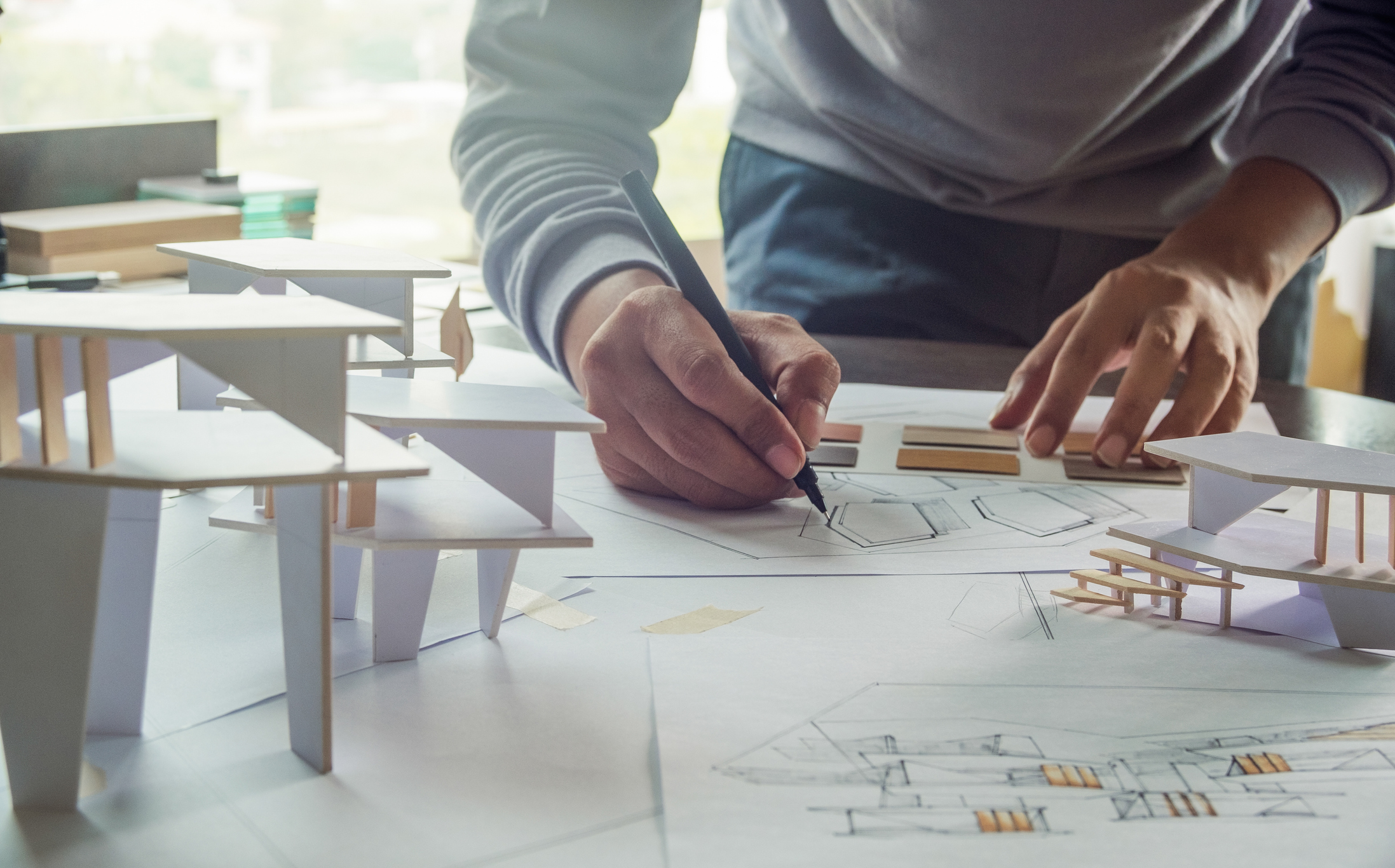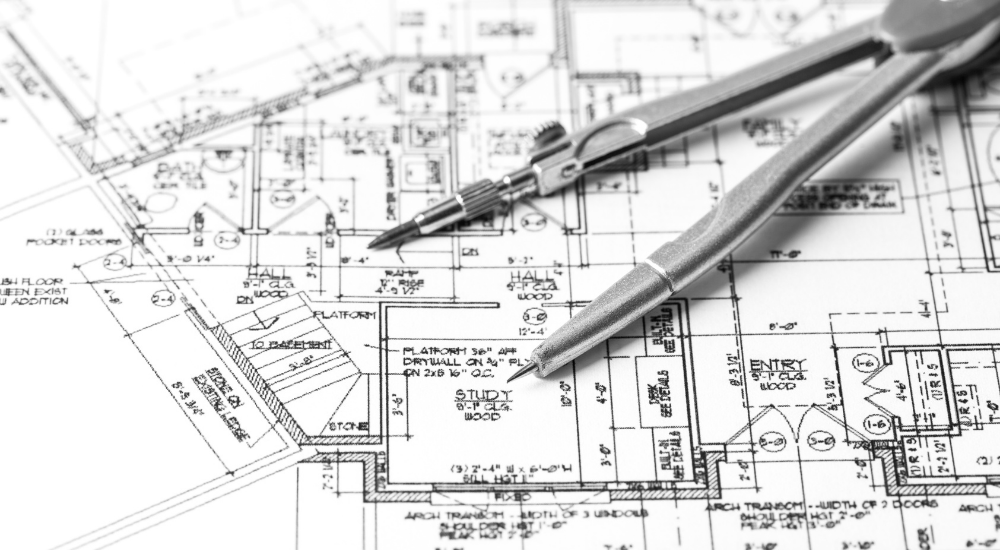Understanding the Diverse Job Paths Available for Aspiring Architect
As an aspiring Architect, you have a globe of occupation courses waiting for you. Whether you're drawn to typical style or the nuances of lasting design, there's a specific niche that aligns with your rate of interests.
Conventional Design: Creating Structures and buildings
Typical architecture concentrates on creating structures and structures that mix performance with aesthetic charm. As you discover this area, you'll value the complex equilibrium between type and purpose. You'll learn to draw inspiration from historical styles, incorporating elements like proportion, materials, and craftsmanship. Your styles can reflect social heritage, showcasing local traditions while meeting modern-day demands.
You'll establish abilities in drafting, model-making, and website analysis, permitting you to envision and connect your ideas efficiently. Involving with customers, you'll require to understand their vision and equate it right into feasible layouts.
Additionally, constructing codes and sustainability techniques are crucial in your job, ensuring your frameworks are safe and ecologically friendly. As you grow in your occupation, you'll locate possibilities in domestic, commercial, or perhaps restoration tasks, each offering one-of-a-kind difficulties. Embracing conventional style paves the way for a meeting occupation that pays tribute to the past while shaping the future.
Urban Planning: Forming Communities and Public Spaces
As an aspiring Architect, you can play a necessary duty as an urban planner, transforming exactly how communities operate and engage. By employing area engagement techniques, you'll assure that locals have a voice fit their setting. And also, integrating sustainable layout concepts will help develop areas that not just fulfill today's requirements yet additionally protect the future.
Function of Urban Planners
While lots of could consider designers as the sole visionaries behind structures, city organizers play an essential function in shaping the broader landscape of neighborhoods and public spaces. They evaluate land usage, zoning legislations, and area requires to produce sustainable atmospheres that boost quality of life. By collaborating with various stakeholders, you'll assist create parks, transport systems, and suburbs that promote social communication and access. Urban organizers likewise focus on environmental factors to consider, ensuring that developments incorporate eco-friendly areas and support biodiversity. Your expertise in spatial design and neighborhood dynamics allows you to imagine future growth while protecting cultural heritage. In this essential function, you'll straight affect just how individuals experience their environments, making every job a possibility for favorable change.
Area Engagement Techniques
Efficient community involvement strategies are vital for metropolitan organizers to ensure that the voices of citizens are listened to and valued in the planning process. To promote meaningful dialogue, you need to prioritize open forums and workshops where neighborhood members can share their ideas and problems. By actively listening and integrating comments, you'll develop areas that reflect the community's demands, inevitably leading to more effective and lasting metropolitan settings.
Sustainable Layout Principles
When designing city areas, integrating sustainable design concepts is critical for creating settings that grow both ecologically and socially. You need to begin by focusing on energy performance, making use of products that lower waste and promote recycling. Think about incorporating environment-friendly spaces, like gardens and parks, to boost biodiversity and boost air top quality. Advertising walkability and public transport can minimize dependence on cars, promoting a healthier area.
Designing with water preservation in mind is likewise crucial-- assume concerning rainfall gardens and absorptive surfaces to manage stormwater. Entailing community participants during the preparation procedure warranties that the rooms you develop satisfy their needs and urge social communication. By accepting these concepts, you'll add to vibrant, sustainable metropolitan landscapes that benefit everybody.

Landscape Style: Creating Sustainable Exterior Atmospheres
As you discover landscape design, you'll find important layout principles that create attractive and functional outside spaces. Sustainable techniques play an important duty in ensuring these environments prosper while lessening ecological influence. And also, you'll find a variety of profession opportunities that enable you to make a genuine difference in how people interact with nature.
Style Concepts in Landscape
Comprehending design principles in landscape style is crucial for producing lasting outside atmospheres that harmonize with nature. You'll require to ponder components like equilibrium, range, and proportion to guarantee your designs feel cohesive and inviting. Furthermore, pay interest to seasonal modifications, developing with materials that enhance the environments year-round.
Lasting Practices Introduction
Lasting practices in landscape architecture not just concentrate on looks but likewise prioritize environmental health and source conservation. By incorporating native plants, you boost biodiversity and lower the demand for chemical plant foods and pesticides. Executing effective irrigation systems helps preserve water and minimizes runoff, safeguarding nearby ecological communities. You can create areas that advertise dirt health, such as using organic materials and exercising permaculture concepts. Furthermore, incorporating green infrastructure, like rainfall gardens and permeable sidewalks, help in stormwater administration and minimizes metropolitan warm. You contribute to a much healthier earth and supply spaces that cultivate neighborhood connection when you create outdoor atmospheres with sustainability in mind. Inevitably, these methods guarantee your layouts profit both individuals and the environment for many years to find.
Job Opportunities Exploration
With a solid structure in lasting practices, landscape design supplies a selection of occupation paths that enable you to make a significant effect on the atmosphere. You could work as a landscape developer, developing aesthetically pleasing and useful outside rooms, or focus on ecological reconstruction, aiding to revive broken environments. Urban planners frequently team up with landscape engineers to create eco-friendly rooms in city settings, improving city livability. If you're passionate about education and learning, think about coming to be a landscape architecture teacher, inspiring future generations. here Furthermore, you might collaborate with nonprofits concentrated on environmental sustainability or take part in research to innovate brand-new methods. Each path not only shapes stunning environments but additionally cultivates a much healthier world for future generations.
Sustainable Style: Concentrating On Eco-Friendly Practices
As you discover your career in design, welcoming green methods can establish you apart in a competitive field. Lasting style concentrates on producing structures that minimize environmental effect while enhancing occupant wellness. By incorporating sustainable products, energy-efficient systems, and lasting structure strategies, you'll contribute to a greener future.
Beginning by getting knowledge of eco-friendly click here certifications like LEED or BREEAM, which can strengthen your credentials. Think about just how all-natural light, air flow, and thermal performance can maximize style. Work together with engineers and ecological specialists to innovate solutions that reduce waste and conserve resources.
Don't forget the relevance of community involvement-- appealing regional stakeholders can inspire styles that integrate with the setting. As clients progressively focus on sustainability, your expertise in environment-friendly techniques will not just draw in tasks however additionally fulfill your enthusiasm for liable design. Welcome this essential aspect of the profession, and watch your career grow.
Historical Conservation: Shielding and Recovering Social Heritage
While you begin on your building journey, take into consideration the essential role of historical conservation in keeping our cultural heritage. This field concentrates on the defense and repair of considerable structures, websites, and frameworks that inform the stories of our past. By involving in historic conservation, you'll aid safeguard the building legacy that forms area identification.
As a historical preservation Architect, you'll examine historical relevance and analyze the problem of structures. You'll function carefully with historians and conservationists to guarantee authentic reconstruction methods are utilized. This profession course permits you to mix creativity with research study, enabling you to create solutions that respect initial materials and workmanship.
Your job not just contributes to sustainability by recycling existing buildings yet additionally cultivates a sense of pride within areas. Embracing this course will certainly assist you end up being a guardian of history, maintaining the tales and looks that enhance our lives.
Inside Design: Enhancing Indoor Spaces
Historic preservation and indoor architecture both share a dedication to boosting the developed atmosphere, however they concentrate on different elements. While historic preservation highlights keeping a framework's historical and cultural value, indoor style nos in on maximizing indoor spaces for functionality and aesthetics.
As a hopeful Architect, you'll find that interior architecture enables you to blend creativity with technical abilities. You'll design areas that not only look excellent however also advertise convenience and performance. This area involves understanding exactly how light, shade, and materials engage within a room, impacting mood and use.
You'll deal with numerous tasks, from domestic homes to business workplaces, making certain that each environment meets the demands of its passengers. By prioritizing user experience, you can change interiors right into inspiring and functional rooms, making a substantial effect on how people connect with their surroundings. Embrace the chance to enhance indoor atmospheres and shape the way people live and function.
Industrial Layout: Combining Functionality With Aesthetic Appeals
Commercial layout plays a necessary duty in creating items that flawlessly mix aesthetics with functionality, ensuring that what you make use of daily is not just aesthetically appealing but also practical. As an aspiring Architect, you could involve on your own in this field, concentrating on developing everything from furniture to customer electronic devices. Your work involves comprehending user needs, products, and making processes, enabling you to develop cutting-edge options Architect that enhance day-to-day experiences.
In commercial layout, you'll usually team up with engineers, makers, and online marketers, ensuring that your designs are not just attractive but likewise feasible. This occupation course provides a vibrant atmosphere where creativity fulfills usefulness, making it a fulfilling option for architects interested in forming the items of tomorrow.
Frequently Asked Concerns
What Educational Certifications Do I Required to Come To Be a Designer?
To become a designer, you'll require a professional degree in design, commonly a Bachelor's or Master's. Furthermore, you'll have to complete a teaching fellowship and pass the Architect Registration Assessment to exercise lawfully.
Are There Certification Demands for Various Building Job Paths?
Yes, there're certification needs for various building courses. Architect. You'll need to pass examinations, complete teaching fellowships, and in some cases go after specialized training, relying on your selected emphasis, like landscape architecture, city design, or historical preservation
What Software Skills Are Vital for Architects Today?

Just How Can I Gain Practical Experience While Studying Style?
You can gain sensible experience by interning at building companies, joining style competitors, volunteering for neighborhood jobs, or teaming up with schoolmates on real-world tasks. These chances boost your skills and construct useful links in the industry.
What Task Opportunities Exist Outside Standard Architecture Firms?
You can check out numerous job possibilities outside typical design companies, like metropolitan preparation, interior decoration, landscape style, building administration, real estate growth, or even duties in sustainability consulting. Each offers one-of-a-kind obstacles and rewards.
Whether you're drawn to typical architecture or the subtleties of sustainable layout, there's a specific niche that lines up with your passions.When designing city spaces, integrating sustainable layout concepts is crucial for developing environments that thrive both ecologically and socially.As you explore landscape architecture, you'll find vital style concepts that produce beautiful and useful exterior areas.Understanding layout concepts in landscape architecture is essential for producing lasting outdoor settings that harmonize with nature.In commercial design, you'll often collaborate with suppliers, designers, and marketers, making sure that your styles are not just lovely but also possible.